
From: M. Gouldhawke
by M. Gouldhawke (Métis & Cree), April 27, 2020
“[Leftists] seem to be attracted to media cameras like flies on shit… I remember non-homeless people showing up claiming to be the ‘organizers’ and making decisions for people.”
– T. Forsythe criticizing typical activist behaviour during the 2002 Woodwards Squat in Vancouver“You know, we’re living in a society! We’re supposed to act in a civilized way!”
– George Castanza, fictional paragon of middle class entitlement and security
Desperate times call for desperate measures. But they also call for us to measure our methods against a social context and history. We could limit ourselves to simply taking action and then contemplating our actions casually, as if they were a tempest in a teacup, frozen in time and sealed off from the rest of society. But would it put a roof over anyone’s head? And would our understanding of anything, even our own actions, actually be any clearer?
The problem with the responses of the groups “Our Homes Can’t Wait,” but most of all the Red Braid Alliance, to criticisms of their so-called “Stewart Squat” is that they conflate different types of criticisms and outright derision, lumping together different individuals and groups who are voicing criticisms or off-hand remarks.
The Our Homes Can’t Wait campaign’s statement even confuses the government-sanctioned use of an Ontario high school as a temporary shelter with the action claimed as a “squat” in East Vancouver.
The building recently occupied in East Vancouver had already been shuttered for seismic upgrades prior to the arrival of COVID-19, and is located on the grounds of East Vancouver’s Lord Strathcona Elementary School, also home to a community centre with a food program on the other side of the complex.
Squatting, historically, is the unauthorised taking of a building by those who intend to use it to house themselves, because they need it. Not the management of a shelter or housing by the government.
There is a distinction here between self-organization and government organization, but also purpose. An occupation is a different kind of action, and unless we’re talking about workplaces or other buildings to be occupied or expropriated to meet immediate needs other than housing, we’re usually referring here to actions intended as temporary, as a means to some other end, such as securing government or corporate action, or getting them to back off.
The queer Indigenous youths (and queer non-white supporters) that have brought up criticisms on social media related to the Stewart Occupation have been clear that they are not criticizing the houseless people in the Downtown Eastside for participating in squats or occupations, but are specifically wary of the Red Braid Alliance as an organization and how they conduct themselves. The Our Homes Can’t Wait campaign was never even mentioned in this context, to my knowledge.
This critique of Red Braid as an organization goes back at least as far as their behaviour during the Wet’suwet’en solidarity struggle, where Indigenous youths came to resent Red Braid’s recruitment methods and misrepresentation of themselves as an Indigenous organization. From all appearances and interactions with Red Braid (recently rebranded from the “Alliance Against Displacement”), its central leadership is non-Native, just as the vast majority of its membership, most active members, and usual spokespeople are non-Native.
This is why there were not the same criticisms coming from Indigenous people about the tent city in Oppenheimer Park, for example, as there are now for the Stewart Occupation. Our people are not opposed to “militant” resistance and just recently experienced a new high point in our long history of Indigenous struggle against settler colonialism with the Wet’suwet’en solidarity movement.
While Red Braid does have a few Native members, the wider Indigenous community, in its critiques of Red Braid, is not referring to those members, but instead the non-Native leadership, spokespeople and majority membership of Red Braid. Our people are wary of being gate-kept by non-Natives who are trying to score social media points and integrate all struggles, including our own, under Red Braid’s official banner.
It’s all reasonable and good if the Indigenous members of Red Braid want to feel represented in the organization and have their leadership respected, but this in itself doesn’t transform the nature of the group, or give non-Natives the right to write and speak in the Native “voice,” misleading the public as to who they’re actually listening to when they hear Red Braid statements.
Red Braid may also be able to co-organize an action with a separate Downtown Eastside group that has more Native members, or may draw other individual Native people to their actions, but this still does not make Red Braid an “Indigenous organization” as they claim.
In their Organizational Strategy, Red Braid makes a distinction between themselves as an organization and what they call their “social base,” but this is typically eclipsed in their social media and official statements where they write in a Native and houseless ‘voice’ despite being neither.
Solidarity means struggling alongside others, not pretending to be them. Solidarity means having your own struggle and linking it to that of others, not appropriating the struggles of others.
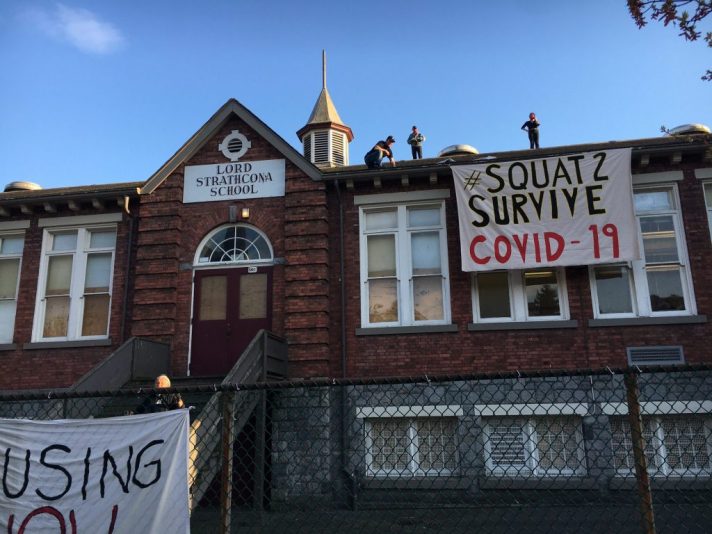
The responses coming from Our Homes Can’t Wait and Red Braid to critiques of their action falsely assume that queer Indigenous youths, and other critics, don’t already have multi-generational family connections to people in the Downtown Eastside. From an Indigenous perspective, we can’t and wouldn’t want to blame our own houseless relatives for taking up an offer of shelter that happens to come along, whether in an occupied building within an elementary school complex or otherwise.
Concern for our relatives is part of being Indigenous and is not based on us supposedly “infantilizing” houseless people or claiming that they have no agency, no ability to make their own decisions. Houseless people make decisions every day on how to survive and how to get by, as we are aware. The ability to make personal choices as individuals is a mundane fact of daily life. The middle class might try to mystify this, and say that “all we are is dust in the wind,” but Indigenous people don’t necessarily buy it.
As Indigenous persons, by definition, we are relatives belonging to distinct Indigenous peoples. We are not just individuals, or citizens with rights granted by the Christian-based Canadian Charter of Rights, and our resistance is social, not just personal.
Whether an individual houseless person chooses to take up an offer of housing from a government-run agency or a self-proclaimed revolutionary group led by a non-houseless white man, not much can be said in the abstract about the mindset and soundness of that choice other than by that person themselves.
It’s more than possible to care about the well being of others without condescending to them or looking down on them because of any particular choice they’ve made. Just as it’s possible to be a lot more concerned about the choices of a non-Native, non-houseless activist group than about the choices of those who join their actions
At any rate, the early market for moral salvation and contempt of other peoples’ way of life in our territories was not cornered by us, but by European missionaries who claimed they were coming to “save us.” From what, only God and his official representatives on Earth really knew, despite whatever those bullshitters claimed about why they were doing what they were doing. Words can hurt, but the imposition of one world onto another can hurt a lot more.
Unlike those settlers who operated residential schools (and day schools) and who thought they could and should try to occupy the minds of Indigenous people and replace our consciousness with a euro-american one, we typically try to respect the autonomy and integrity of the individual, so long as that individual respects others, so long as we all try to help each other rather than bring harm. Ultimately, the attempt to replace our consciousness has yet to be successfully completed, otherwise we wouldn’t be having this conversation.
The strength of Indigenous peoples’ social relations in fact creates a greater potential for the expression of the individual, in contrast to settler capitalist society, which churns out generic atomized citizens on an assembly line, who compete daily with each other on the basis of their individualized rights, in an economy based on antagonism between individuals.
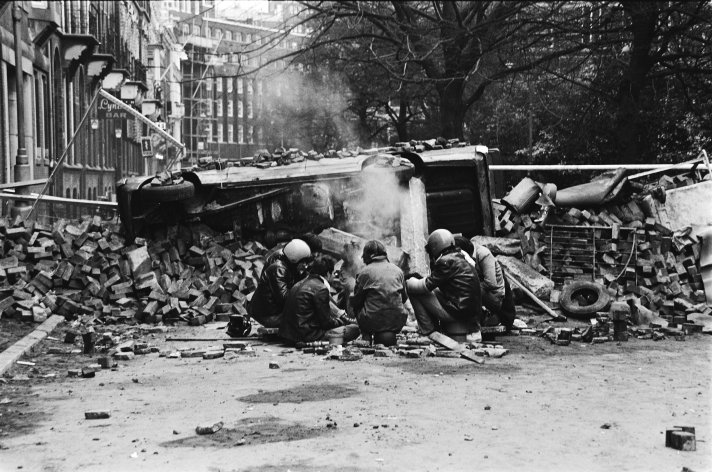
Who Do You Think You Are?
Blood is thicker than twitter. Although VANDU and Pivot also publicized the Stewart Occupation on social media, it was Red Braid who dominated various forms of media, and who presented it, at least implicitly if not overtly, as primarily being their own action, acting as its primary spokespeople.
Our Homes Can’t Wait confirms in their statement that a connection between Red Braid and an Oppenheimer Park tent city resident was the spark that lit the fuse for a series of meetings that laid the groundwork for the occupation. The leadership of Red Braid are neither houseless, nor Indigenous, nor residents of the neighbourhood themselves, and this is not just an irrelevant fact to be swept under the rug.
It is all well and liberal to say that we are all equal individuals making free choices together at will, at all times, but that doesn’t in itself erase material inequality, or the fact that we all make daily survival choices and trade offs, whether choosing to work at shitty jobs or choosing to stay at shitty shelters, because the alternative seems worse. We’re all capable of making shorter term decisions that don’t exactly reflect our own longer term wishes for our lives, or even our own longer term physical and mental well being.
Freedom is not just freedom to choose between options presented by others, it’s also the freedom to have the material capacity to actually do something one wants to do for oneself and with others.
As Gilles Dauvé wrote, “Freedom consists not in being able to do anything one wants, but in wanting what one can do.” Even in the context of actual social revolution and the people arming themselves, the same people have displayed the capacity to delegate their power to others and renounce their own new found freedom. That is a kind of political agency too, and it’s no holy grail.
It’s true that “outsiders” to specific activist organizations don’t usually see the internal discussions and meetings that go into producing various actions and instead only their results, often through media that can’t or doesn’t provide a backstory. But this goes for Indigenous resistance as well, where non-Natives sometimes think they understand our context and history based only on the very limited things they see when the show up to our actions, and then just leave it at that.
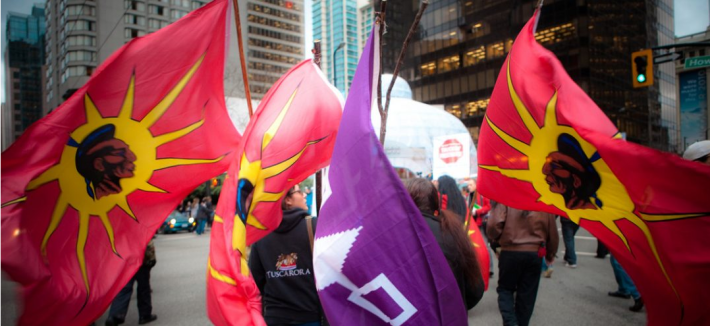
Indigenous Resistance to Settler Colonialism
Our struggle as Indigenous peoples comes up against various colonial strategies over time, from land theft, to the kidnapping of our children to take them to residential schools in the past, to the kidnapping of our children from East Vancouver schools in the present, right up to the start of the COVID-19 pandemic, as part of the ongoing colonial Scoops, where Native children are placed in non-Native foster homes.
Houselessness, underhousing and overcrowding are not exclusively inner-city urban experiences, but also exist on “First Nations” reserves, in various parts of cities in shared Métis/FirstNations territory on the Prairies, and in Inuit territory, where no reserves or large cities exist (Iqaluit having a population of 7,740 as of 2016, but still struggling with houselessness caused by Canadian colonialism).
Our people as a whole are not opposed to “militant” resistance. In fact, our history of resistance is much stronger, more diverse, better organized, and constituted on a much more solid basis than that of short-lived, white-led and white-centered activist groups like the Red Braid Alliance. We do not see ourselves as individual citizens fighting for personalized rights (Charter or otherwise), but as peoples, as relatives, fighting alongside each other for social freedom and Land Back.
The current generation of Native youth are not necessarily any less radical than their elders who occupied government buildings, often over school conditions, and who reoccupied land in the 1960’s and 70’s. The youth of today are active on multiple fronts, using memes as a medium for revolutionary messaging, along with taking to the streets with graffiti, and at demonstrations and blockades.
The problem we face as Indigenous peoples, which is only compounded by the latest in a series of pandemics, is primarily social. COVID-19 doesn’t even respect the concrete borders constructed by nation-states, let alone area codes or the difference between one building within a school complex and another. Prisoners across Canada, who, due to colonialism are disproportionately Indigenous, have separate cells which they can, and are being locked inside. But prisons are hotbeds for the spread of COVID-19 because they are a social institution of the colonial and capitalist State, not just an isolated, exceptional location.
Despite their security measures and solid walls, prisons are not completely sealed off from the rest of society, since guards and other social relations of the prisoners constantly bring tiny parts of the outside world in. If prisoners were truly isolated as individuals, they would be safe from the threat of catching COVID-19. But the opposite is true, because social context counts for a lot. And no particular building can be considered as socially sealed-off from its surrounding area, or the society that built it and which it lives within.
White people may live in a society based on individual citizens who mostly stay in their “own” neighborhoods, consider their homes their personal castles and think every person is an island unto themselves. But from a Native perspective, it’s all Native land, and it’s about all of our relations, not just any particular person’s relation to their area code and where they lay their head. We don’t respect the Western nuclear family structure or capitalist private property. Our nations resisted the surveyors who tried to plot out individualized parcels of our land.
Our very existence as (social) individuals, myself included, is directly connected to residential schools and pandemics. Knowing my ancestors’ history, I know I wouldn’t even be here to write this if not for what came before, a colonial and anti-colonial context of Indigenous people self-organizing to survive pandemics and resist colonial schooling, to survive in general, as both individuals and peoples. No organizational membership card can tell you your history, or where you should go and how you should do it.
Although Canadians claim they want to reconcile with us over the history of their school systems, they also tend to keep their cards close to their chest, not even considering the return of our land and people to our proper place as a necessary first step. Canadians seem to only want to dig up the truth on the condition that after airing it out, they can bury it again.
We take what we need to survive in the meantime, but we don’t aspire to become Canadians. The reason our resistance is stronger than that of white activist groups is entirely social, because our struggle is based in extended family, distinct physical and social communities, and overlapping, inter-generational and international social networks.
The State is not so much a service provider, from our perspective, as it’s an institution of intimate familial violence and destruction, an institution of theft, both social and material. Theft of our previous abundance, which the State exploits and redistributes among capitalists and settlers. Now, some people even want to steal our identities and our social movements too.
All colonial tactics and strategies ultimately converge toward a general policy goal. The intention is to permanently destroy the familial, cultural and political integrity of our peoples, to secure an endless future for the settler State, in a fantasy world of endless resources and extinguished resistance.
The very founding of British Columbia and Canada, along with their continued existence, depends on their strategic use of multiple waves of pandemics, on their use of State institutions such as colonial schools and enforcement agencies, used to steal Indigenous land, to steal our people from our families, and to quash our persistent resistance to settler capitalist rule.
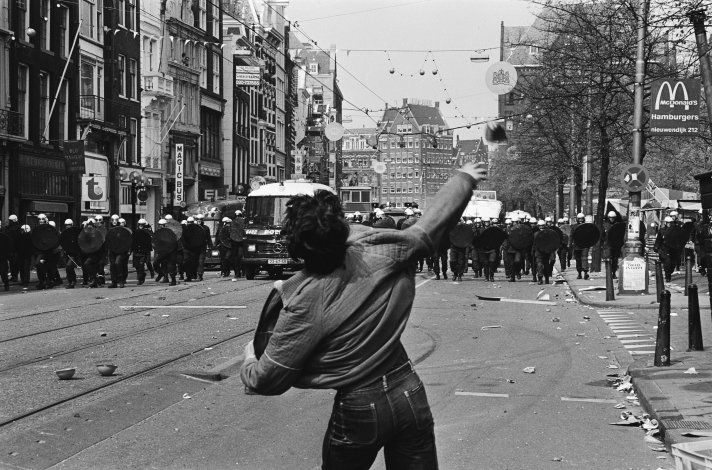
Strategies and Methods
The statements by Our Homes Can’t Wait and Red Braid, that casually dismiss safety concerns regarding COVID-19 and police repression, don’t withstand the most rudimentary test of logic or common sense. I may be less safe and more susceptible to injury when I leave my house, but that doesn’t mean I should play around with knives at home just because the government doesn’t specifically tell me not to. The presence of threats of harm in one location, greater or lesser, doesn’t necessitate the lack of precaution in another.
An additional criticism of the Stewart Occupation, coming from non-Native people as well, was that Red Braid could have launched an actual squat instead of a media-focused occupation, keeping it quiet (as most real squats usually do at first) and therefore making it potentially more sustainable as a place for unhoused people to stay longer than a few hours.
The Our Homes Can’t Wait campaign claims this is a retroactive assumption, that one can’t know whether cops will crush a squat right away, and there’s no contradiction between the publicness of a squat and its use as shelter space.
However, squatting is not unprecedented in Vancouver or other parts of the world and cops aren’t known for tolerating any form of occupation or disruptive action indefinitely, particularly squats or blockades. Our Homes Can’t Wait, and Red Braid, argue we need to go public to build a movement. But in the case of a squat, the opposite is also true. We need to build a movement in order to hold a squat.
If you are not Indigenous yourself, you may also want to consider how it looks to Native people when a known non-Native activist group, like Red Braid, publicly announce their intention to permanently live inside an elementary school complex, where the school’s Native attendance is about 20 percent, where Native parents and Native support workers are daily trying to prevent the Ministry from getting any more involved in children’s lives than they already are.
The particular building occupied may have been shuttered for seismic upgrades, but it’s part of the same school complex. It was never the only option. And relying on it being government property turned out to be a non-sequitur strategy anyway, as Natives could have warned you, since the State invades our lives daily, inside and outside of schools, with no respect or hesitation. Depending on how “Native” we look to outsiders, the State doesn’t even hesitate to end our lives in an instant, as Winnipeg police recently did to three of our people within the space of two weeks.
The Native community of Vancouver never gave Red Braid a free pass to invite themselves to live inside the East Vancouver schools that have the largest attendance of Native youth. Native people never asked Red Braid to politically braid our struggles with their own in the first place, let alone appropriate our culture. Treaties, from the Native perspective, are based on a certain level of sharing matched with a certain level of separation, not white people legislating over us, not white people claiming ownership over our lands, our social spaces or our struggles.
If the primary intention was a short occupation to get the city and province to take action and open alternative housing, then it wasn’t a squat. If the intention was to actually live somewhere, why choose a school that will eventually re-open instead of somewhere else that doesn’t have plans to be used? If the intention is to build a social movement, why dismiss some critiques and concerns by sympathetic community people, or obscure the actual nature of other criticisms? Why is it that repeated short term occupations and subsequent arrests are the only possible strategic and tactical choices that will work toward the stated goal of building a movement and securing housing?
Purposefully getting arrested is not the only option in every circumstance, or most people’s preferred option. And getting arrested doesn’t necessarily build a movement, as we’ve seen with Red Braid’s years of going out of their way to get taken into custody, which has not significantly grown their membership numbers relative to how many times they’ve done it and how long they’ve been doing it for (under the name Alliance Against Displacement and previously various anti-poverty groups).
Since the 2002 Woodwards Squat, non-houseless activists in Vancouver have consistently tried to co-opt “squatting” for their own self-promotional media stunts and organization-building purposes, rather than to meet the immediate needs of the houseless. This was criticized back then too. Nobody here was born yesterday, unfortunate as that may be for current day activists aspiring to use social media to put a filter over people’s eyes.
Squatting depends on a social movement, not social media. Even in European countries that experienced mass militant defenses of squats and the partial legalization of squatting, such as in the Netherlands, the State can and does eventually crack down, and can even re-criminalize the act of squatting. Abstract legal rights and social media likes are not what protect us from police evictions, or build movements. We protect us, as a slogan used during the Wet’suwet’en solidarity struggle goes. And politicians, aspiring or actual, chase after our actions, trying to re-insert them into their legal order one way or another.
From a certain point of view, Red Braid’s strategy looks ass backwards, like putting the Red River cart before the ox. It is the social power of social movements using social disruption that creates the basis for legal claims to rights in the first place, as well as the inclination of the State to make concessions.
It is not the mere claim to rights, backed up by media campaigns and small occupations swiftly ousted by the cops that changes social and material conditions, like God’s word made flesh. And it is the strength of social relations that create both the material and social basis from which successful, sustainable resistance can grow. Social bases are built on a social basis.
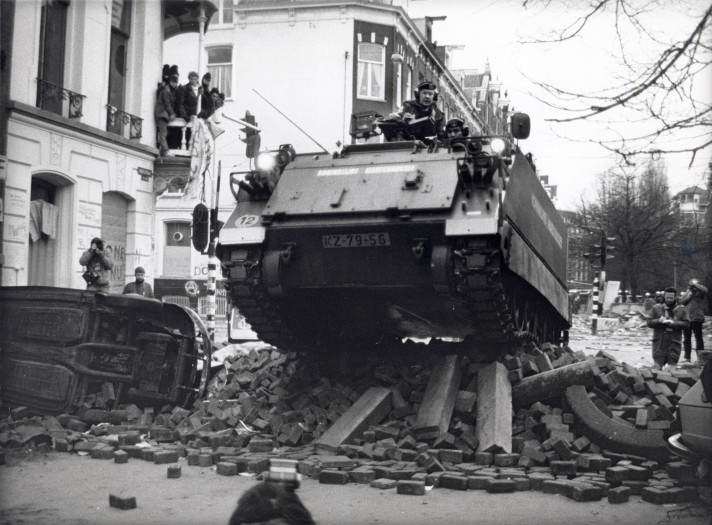
The Right of the Wronged to Endure
Red Braid and Our Homes Can’t Wait claim their squatting movement and its defense are built around Section 7 of the Canadian Charter of Rights and Freedoms, the supposed “highest law of the land” (forget Indigenous law and land tenure for a minute says Canada, “you can have a little Section 35 later, as a treat”). The Charter, not incidentally, starts off with the highly spurious claim that “Canada is founded upon principles that recognize the supremacy of God and the rule of law.”
Having never personally met or seen Canada’s God, I can’t say if he’s real or what kind of guy he might be. I only know that in reality, Canada is a corporation, derivative of Indigenous land tenure and legal systems, but mostly is simply a child whose parents are another corporation, the Hudson’s Bay Company, and the British Empire. As far as Canada’s supposed rule of law goes, the Wet’suwet’en struggle just recently showed, once again, what a joke that is, amounting to not much more than a moralistic colonial argument for police repression.
Section 7 arguments have actually had some limited success in the courts, such as with the defense of Insite, Vancouver’s safe drug injection site, and at tent cities in Victoria and Abbotsford, but not with squats so far.
Christian Charter rights are not proactive, positive rights to possess something, like a home for example, as the judge in the Abbotsford case re-affirmed. Meanwhile, private property rights are not even codified in federal law, except to say that the federal government can expropriate any private property it needs, since the right of property is held to an even higher and more sacred standard than even the supremacy of God or the rule of law, namely that of the single most sacred relationship within colonial society, the one between settlers and their State.
Section 7 rights aren’t all encompassing, like the Christian God’s supposed love for all his stupid disobedient children. Canada’s version of Indigenous rights under Section 35 of the Constitution come way before before the criminal code, but that hasn’t stopped Canada and its subsidiary corporations from stealing our land, or sending in their cops to enforce injunctions under Civil Law, which isn’t even codified, being based simply on the arbitrary will of earthly judges who balance the rights of corporations against Indigenous peoples. Charter rights don’t even stop cops from simply shooting our people down in the streets.
Charter rights aren’t likely to trump criminal charges of break and enter either, and at any rate, claims cases to be brought forward first require a legal team, legal costs and lengthy trials to pursue. All of which service providers or activist groups may have access to through legitimately helpful organizations like Pivot, but which don’t exactly facilitate a growth in grassroots militant resistance on their own, or even allow for mass participation.
Rights cases aren’t easy or quick or accessible, even for entire Indigenous nations to launch, let alone win. And Christian Charter rights, unlike Indigenous rights, are negative and individualized, meant to stop government agents from doing something that supposedly goes one step too far, but not to provide for the actual needs of people.
Métis community organizer Howard Adams wrote in 1995, “Organizational power is from the power of masses of people and one cannot effectively use masses in a constitutional battle that takes place in court rooms and government conference rooms.”
The same goes for claims under the Christian Charter. It’s not that these kinds of cases don’t sometimes win useful results, but the distinction between social movements and legal reform should remain clear. It is social movements that create the foundation for legal rights, not vice versa. And not everyone has the same access to colonial justice, or wants to work within their system.
In 2011, the Portland Hotel Society, who had previously worked with the cops and city to evict the tent city around the Woodwards building in 2002, finally won a Section 7 case over Insite, Canada’s first official safe drug injection site. Sounds good, aside from the unfortunate anti-squat history, even if it took almost a decade to win. But two years after the case was first launched through the courts in 2003, a slight hitch appeared, not in the courts or inside Insite itself, but out on the streets and in the media.
In 2005, the Vancouver Police Department, with the assistance of the Vancouver Courier newspaper, announced “Crackdown coming on injection drug use.”
“In a reversal of a longstanding police practice not to arrest addicts for possession, the department says it’s taking action because some addicts continue to inject drugs near Insite at 139 East Hastings,” reported the Courier, faithfully and naively.
“It’s really frustrating to see that supervised injection site there and drug users not using it,” said Inspector Bob Rolls, police commander for the Downtown Eastside. “Our goal here is to target the users who are creating street disorder, who are in close distance to the supervised injection site and who are refusing to use that facility.”
And Rolls continued to let nonsense roll off his tongue, as he said he hoped courts would side with cops in handing down heightened sentences for “defiance” to drug users, something that doesn’t fall under the criminal code. Businesses had been complaining about the mere sight of drug users and the cops intended to respond in kind. “We’re after the ones who are ignoring us,” said Rolls, referring to drug users who supposedly refused to use Insite, but realistically referring to all open drug users in the neighbourhood.
“The real goal is to change behaviour,” said Rolls.
Never mind that “behaviour” isn’t illegal, isn’t in the criminal code, and neither is offending the sensibilities of the middle class.
Businesses reportedly applauded the plan to arrest and imprison drug users instead of simply seizing their drugs, because users can always find more stuff if they aren’t in custody, and the drug use out in front of their shops was an eyesore.
Now, in 2020 and in the middle of a pandemic, a similar plan to manage the optics of poverty has just been announced by the government, to send police into Oppenheimer Park to completely clear out the tent city of anyone who doesn’t accept the government’s housing plan. The plan itself only addresses the park that the middle class have been complaining about before the arrival of COVID-19, and ignores the masses of houseless everywhere else in the Downtown Eastside and the rest of Vancouver. And this is only the latest and potentially most aggressive in a long series of police raids of the park, and the neighbourhood.
Instead of the anarchist and communist principle of “to each according to their needs,” the colonial capitalist State follows their own principle of “to the middle class, according to their aesthetic preferences and need to accumulate profit.”
In 2015, a BC Supreme Court judge determined that by-laws intended to facilitate the eviction of a tent city in Abbotsford were unjust, but the spreading of chicken manure around the camp by city workers and the cops pepper-spraying of campers was okay and not a violation of their Christian Canadian Charter rights. Even when the word of the Canadian God is written into law, “Do unto others as you would have done to you” has a built-in exemption for government agents and officials it seems.
Earlier this month, in April of 2020, the BC Human Rights Tribunal decided it would hear a case about the cops pepper-spraying the Abbotsford tent city campers, but not the matter of the chicken manure. Government granted rights are a fickle thing in the hands of freaks who don frocks and robes, and who deem themselves to be above the flock, fit to pass judgement on other people’s lives one moment and hit the golf courses the next.
We protect us. Their colonial system protects them, protects them from us, and keeps us from accessing what we need to survive and thrive.
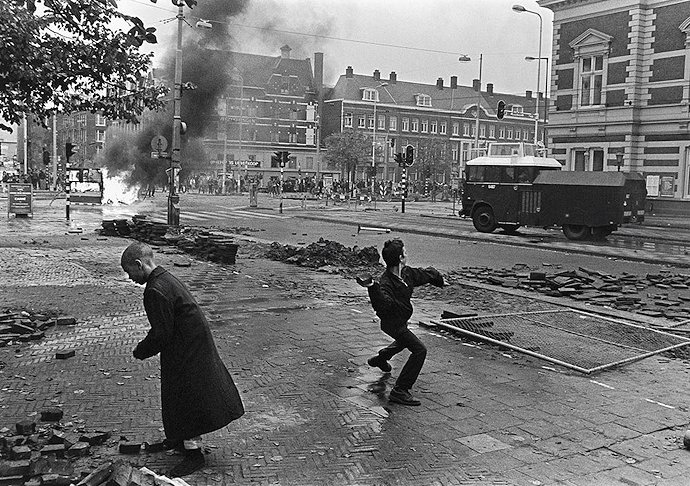
The Militant Managerial Class
“In Saskatchewan, we are radical and we are militant,” Howard Adams told the Vancouver Sun in 1970. “We deal with governments as little as possible. We deal with our own people at the grass roots level. We want to involve the masses of people who live in poverty.”
In contrast, Red Braid appears to have no qualms about working with politicians, despite also posturing as radical revolutionaries in order to whine about other people supposedly being reformists or having middle class views. Words are a flexible tool in the hands of the activist or politician who doesn’t have to follow them through to their consequences.
The fact that Red Braid takes “militant” action says nothing about how or why they do so, or what their goals are, or what their structure is. People break the law every day, to survive or otherwise. This alone doesn’t tell us much about whether we would want to get mixed up with these people ourselves.
We don’t respect private property. We don’t respect the rich. We respect the common people. But “revolutionary” organizations have to earn our respect.
Howard Adams always warned our people to be on the watch for elitism and bureaucracy within social movements and organizations, to be alert to how groups are prone to co-optation, especially when they receive government funding, as Adams took to heart the lessons handed down by his mentor, Métis socialist Malcolm Norris, who was forced by the government to resign from his job with the Prince Albert Friendship Centre simply for voicing support for an Anishinaabe mass demonstration in Kenora in 1965.
During an interview conducted in the 1980’s, Adams reflected on the Red Power movement of the 60’s and 70’s, explaining how when he first started attending meetings, Native people would sometimes stop before starting and kick any white people out of the meeting.
Adams laughs thinking about it, seemingly thinking it was a bit extreme, but goes on to explain that he came to understand the reason behind it, because colonialism affects our mental state too, and Indigenous people would often unintentionally privilege the words and thinking of white speakers at meetings. So Natives were asserting themselves and trying to decolonize their own mindset, trying to create Native spaces where none yet existed.
In a 1987 article on squats, an Italian anarchist with personal experience with squatting, Alfredo Bonanno, warned against the tendency in Europe of governments to grant spaces to movements in the wake of social struggles, in order to suppress active resistance.
“In cases where these spaces are given to us,” wrote Bonanno, “that depends on the fact that they want to control us, they want to ghettoize us.”
It’s not just a question of taking squats but also of defending them, he continues. “This defense must not only be a question of barricading ourselves behind a wall and putting barbed wire out front.”
“We cannot simply limit ourselves to keeping the cops out,” states Bonanno. “To defend the conquered social space it is necessary to grow, qualitatively and quantitatively, with outside intervention and the capacity to develop a discourse that has some meaning and doesn’t simply reduce itself to the satisfaction of one’s own interests or the exercise of one’s own personal capacities.”
“The best way to defend the conquered space is therefore the opening towards the outside. To conclude we can say: the conquest of space only comes about with violent occupation, in that any other road (negotiation) cannot be covered. After, the self-management of space comes about with a defense that doesn’t only consist of the minimal aspects that we could call ‘militaristic’, but also, and mainly, in opening oneself up to the outside, in talking to people, meeting-up and linking one’s own situation to the situation of the area one happens to be in.”
– Alfredo Bonanno, The Struggle for Self-Managed Social Space
Vancouver is not Europe, and no place or time is exactly the same as any other. There are no shortcuts to building mass social resistance. But there’s also no telling which way things can turn once they’ve started, as was the case with the Woodwards Squat, where an action intended as temporary media spectacle also ended up escaping the complete control of its initial organizers and self-appointed leaders, if only for a while.
We can delegate our freedom or our survival to our official representatives, and hope they don’t lead us down a blind alley, but why would we want to? There might be cops (or social workers) down there, and our goal isn’t to chat with them, as Red Braid does on their live streams, but to surpass them. Our goal, in fact, reaches beyond even a change of management, to a change in the collective conditions of our lives.
– M. Gouldhawke
Thank you to my Indigenous relatives who read this article and offered suggestions before publication.
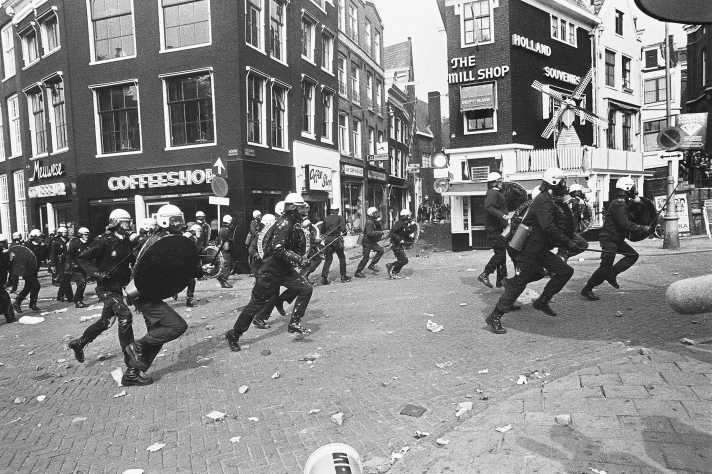
More info:
Winnipeg Police Killed Three Indigenous People in 10 Days (2020)
Ojibwe ‘patient zero’ in Quebec prison files class action against Canada (2020)
Inside the Canadian Prison Hardest Hit by the Coronavirus Pandemic (2020)
Homeless camp chicken manure human rights complaint dismissed (2020)
Indigenous leaders must do more to help Oppenheimer Park homeless, advocate says (2019)
‘Nowhere to go.’ Iqaluit homeless stay in shacks, old boats amid housing crisis (2019)
The night the residential school burned to the ground — and the students cheered (2018)
How a smallpox epidemic forged modern British Columbia (2017)
A Smallpox Epidemic & Colonial Quarantine around Lake Winnipeg (1876-1877)
Indigenous Law, UNDRIP and Corporate Development in BC (Critique of a misinformed statement by Red Braid when they still called themselves Alliance Against Displacement)
Three articles about the Woodwards Squat (2007)
Squatting in Vancouver – A Brief Overview (2002)
From Protest to Resistance: A Report on the Campaign Against the 2010 Olympics
The Struggle for Self-Managed Social Space – Alfredo M. Bonanno (1987)
Amsterdam Coronation Riots (1980)
Cracking the Movement: Squatting Beyond the Media (1994)
Canadian Charter of Rights and Freedoms (1982)
Our Homes Can’t Wait statement on the Strathcona squat (2020)
Why a Vanguard? by Alfredo M. Bonanno (1977)
“Revolutionary alienation is the awareness of the contrast between totality and part. It is disgust for the latter united with the possibility of the former, leading to a form of extraneation that is experienced as extreme discomfort in the face of the transformation of the system… The vanguard is therefore an escape from the sensations of suffering and panic that are caused by revolutionary alienation; it is the refusal of tension towards the movement of the exploited, a tension that the latter develops in its contradictory relationship between self-organisation and delegation of the struggle.”
– Alfredo M. Bonanno, Why a Vanguard? (1977)
There are 5 Comments
Ah the memories
Koningsdag has been renamed Woningsdag(housing day) this year. 4 days later it is exactly 40 years ago that the coronation riots happened in Amsterdam. That rhymes too good. Because of that, this viewing suggestion: 'Andere Tijden' produced a documentary a few years back (2013) about the riots with people who were involved in it (squatters, police, government people), and they talk about the riot itself and the escalation that led to it.
In Rotterdam we are going to project the movie on the facade of the building across the street from our squat to share this piece of squatting history with our neigbors, and to give this 'Housing day' some of political charge that the name of the day deserves. It would be nice if more houses do the same thing. Projecting it across the street, or just inside with your housemates.
https://www.indymedia.nl/node/47802
so basically … crypto-maoists
so basically … crypto-maoists gonna be shady and condascending while using identity in super bad faith?
stay lame af vancouver!
Fuck rba, after doing support
Fuck rba, after doing support for them when they we’re arrested they told me they “hate anarchists”. They are maoists, trotskyists, and marxists who will use whoever furthers their political programme.
RBA is a joke. Its weird as
RBA is a joke. Its weird as fuck that people take them seriously.
nothing much else happening
nothing much else happening in the city. they win by default. and by "win", I mean lose. But the cross country blockades a few months back were pretty cool tho!
